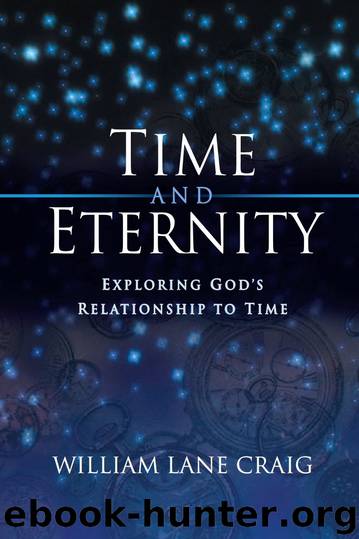Time and Eternity by William Lane Craig

Author:William Lane Craig [William Lane Craig]
Language: eng
Format: epub
ISBN: 9781433517563
Publisher: Crossway
Published: 2001-04-13T04:00:00+00:00
II. Arguments against a Dynamic Conception
1. McTaggart’s Paradox
EXPOSITION
In 1908 the Cambridge idealist John Ellis McTaggart published a remarkable article in the journal Mind entitled “The Unreality of Time.”44 McTaggart was not kidding: He firmly believed that he had come up with an argument which proves that time does not exist, and this argument was the principal legacy he bequeathed to twentieth-century philosophy. The philosopher of time Richard Gale has observed, “If one looks carefully into the multitudinous writings on time by analysts, one can detect a common underlying problem, that being that almost all of them were attempting to answer McTaggart’s paradox.”45
What is McTaggart’s Paradox? The argument consists of two parts. In the first part McTaggart argues that time is essentially tensed. In the second part he argues that tensed time is self-contradictory. It therefore follows that time is unreal.
The first to distinguish clearly between tensed and tenseless views of time, McTaggart thus has something for everyone. Tensers love the first part of his argument, that time is essentially tensed, but they disagree with the second part, that tensed time is self-contradictory. De-tensers love the second part of his argument because it shows that the tensed view of time cannot be true, but they reject the first part because they think that time is in fact tenseless. Virtually no one agrees with McTaggart himself that time is unreal; rather the question has become the nature of time: Is it tensed or tenseless?
Since our concern is with arguments against a tensed or dynamic theory of time, we shall focus on the second half of McTaggart’s proof. His argument here is apt to appear bewildering unless we first understand its metaphysical presuppositions. The key to understanding the contradiction McTaggart sees in a dynamic view of time is his presupposition that past, present, and future events are all equally real or existent and that temporal becoming consists in the movement of the present along this series.46 McTaggart thinks of the series of temporal events as stretched out like a string of light bulbs which are each momentarily illuminated in succession, so that the light is seen to move across the series of bulbs. In the same way presentness moves across the series of events. Since all events are equally existent, the only respect in which they change is the change in tense that they undergo. First they are future, then they are present, then they are past. In every other respect they just are. Obviously, then, for McTaggart, becoming present does not imply becoming existent.
McTaggart observes that pastness, presentness, and futurity are mutually incompatible: No event can have all three. But given McTaggart’s tenselessly existing series of temporal events, every event does have all three! Take an event tenselessly located at t1. At t1 that event is obviously present. But because all events are equally real, that same event also has pastness and futurity because at t2 it is past and at t0 it is future. The moment t1 is not any more
Download
This site does not store any files on its server. We only index and link to content provided by other sites. Please contact the content providers to delete copyright contents if any and email us, we'll remove relevant links or contents immediately.
The Complete Stick Figure Physics Tutorials by Allen Sarah(7135)
Secrets of Antigravity Propulsion: Tesla, UFOs, and Classified Aerospace Technology by Ph.D. Paul A. Laviolette(4982)
Thing Explainer by Randall Munroe(3782)
The River of Consciousness by Oliver Sacks(3414)
The Order of Time by Carlo Rovelli(3073)
How To by Randall Munroe(2911)
I Live in the Future & Here's How It Works by Nick Bilton(2841)
A Brief History of Time by Stephen Hawking(2819)
What If?: Serious Scientific Answers to Absurd Hypothetical Questions by Randall Munroe(2542)
The Great Unknown by Marcus du Sautoy(2535)
Midnight in Chernobyl by Adam Higginbotham(2387)
Blockchain: Ultimate Step By Step Guide To Understanding Blockchain Technology, Bitcoin Creation, and the future of Money (Novice to Expert) by Keizer Söze(2379)
Networks: An Introduction by Newman Mark(2264)
The Meaning of it All by Richard Feynman(2213)
Easy Electronics by Charles Platt(2207)
The Tao of Physics by Fritjof Capra(2164)
Midnight in Chernobyl: The Untold Story of the World's Greatest Nuclear Disaster by Adam Higginbotham(2076)
When by Daniel H Pink(2021)
Introducing Relativity by Bruce Bassett(2018)
